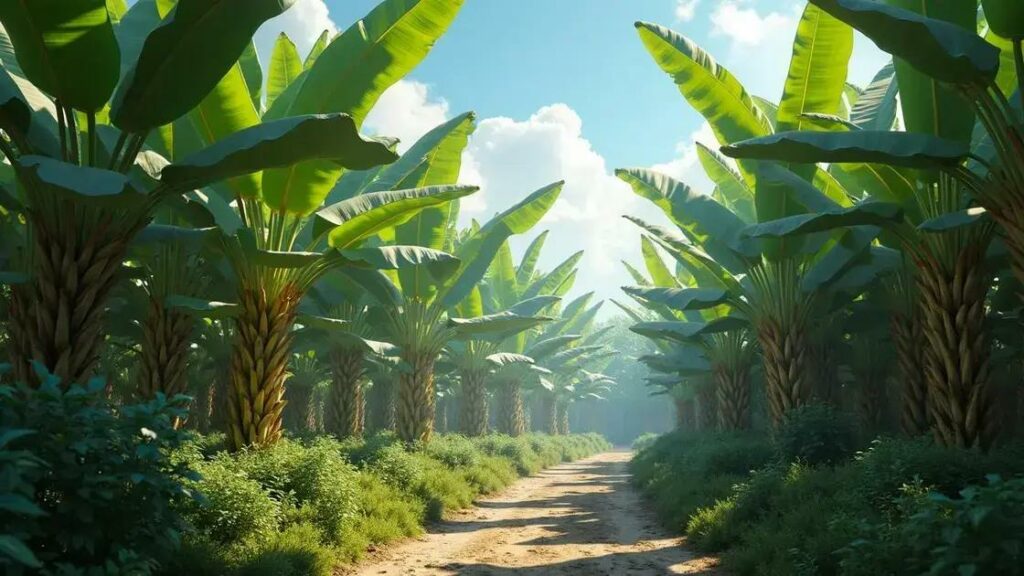How to take care of a banana plant is a question many plant enthusiasts ponder. This delightful tropical addition can flourish in your garden if you understand a few key practices. Let’s explore essential tips that can enhance growth and ensure a beautiful yield.
Table of Contents
ToggleBest soil requirements for thriving banana plants
Best soil requirements for thriving banana plants involve understanding the ideal conditions for banana plants to flourish. Selecting the right soil is essential for promoting healthy growth and fruit production. Here are the key aspects to consider:
Soil type and texture
- Loose, well-draining soil is crucial.
- A mixture of loam and sandy soil can provide adequate drainage.
- Avoid heavy clay soils as they retain too much water.
Soil pH
The pH level of the soil is important for nutrient absorption:
- Banana plants prefer slightly acidic to neutral pH levels, typically between 5.5 and 7.0.
- Testing your soil can help you determine its pH level.
- If necessary, amend the soil with sulfur to lower pH or lime to raise it.
Organic matter and nutrients
Incorporating organic material can significantly enhance soil quality:
- Mix compost or well-rotted manure into the soil to improve its nutrient content.
- Consider adding fertilizer specifically formulated for banana plants during the growing season.
- Regularly check for nutrient deficiencies, as banana plants are heavy feeders.
Moisture retention
While banana plants require well-draining soil, maintaining adequate moisture is crucial:
- It’s helpful to use mulch around the base to retain moisture.
- Ensure consistent watering, particularly during hot or dry spells.
- Monitor the soil moisture to prevent it from drying out completely.
Container option for indoor growth
If you’re exploring indoor gardening techniques, consider:
- Using a large pot with drainage holes to ensure proper soil aeration.
- Selecting a high-quality potting mix designed for tropical plants.
- Transplanting to a bigger container as the banana plant grows.
Conclusion
By focusing on the best soil requirements for your banana plants, you’ll set the foundation for their success. The right soil composition, pH balance, and nutrient content will promote healthy growth and a bountiful harvest.
Fertilizing techniques to boost banana plant health

Fertilizing techniques to boost banana plant health are crucial for achieving vibrant foliage and plentiful fruit. Proper fertilization supports strong growth and helps prevent deficiencies that can impact your banana plant’s overall health. Here’s how to effectively fertilize your banana plants:
Types of fertilizers
- Choose a balanced fertilizer with equal parts nitrogen, phosphorus, and potassium (N-P-K).
- Slow-release fertilizers are ideal, providing nutrients over an extended period.
- Organic options like compost or fish emulsion can enhance soil health.
Fertilization schedule
Using the right schedule is key:
- Fertilize every 6-8 weeks during the growing season (spring to early fall).
- Reduce fertilization during the winter months when the plant’s growth slows.
- Always follow package instructions on application rates for safety.
Method of application
Proper application methods can enhance effectiveness:
- Spread granular fertilizers evenly around the base of the plant, avoiding direct contact with the stalk.
- For liquid fertilizers, dilute according to instructions and water the plants with the solution.
- Incorporate organic fertilizer into the top layer of soil to improve nutrient access.
Signs of nutrient deficiency
Knowing the signs of nutrient deficiency can help you take action:
- Yellowing leaves could indicate a nitrogen deficiency.
- Pale leaf veins and tissue could point to a magnesium deficiency.
- Stunted growth may suggest insufficient phosphorus.
Utilizing organic alternatives
If you’re exploring indoor gardening techniques, consider these organic fertilizers:
- Composted manure adds nutrients while improving soil structure.
- Bone meal enhances phosphorus levels, vital for root development.
- Seaweed extracts provide a broad spectrum of micronutrients beneficial for growth.
Conclusion
By implementing proper fertilizing techniques, you can significantly boost your banana plant’s health and productivity. Regularly monitor your plants and adjust your fertilization strategy for optimal growth.
Effective pest control for banana plants
Effective pest control for banana plants is essential to ensure their health and productivity. Protecting your banana plants from pests not only keeps them thriving but also maximizes fruit production. Here are key strategies and methods to safeguard your plants:
Common pests affecting banana plants
- Spider mites: Tiny pests that suck sap from leaves.
- Banana weevils: Beetles that bore into the stems, weakening the plant.
- Fungus gnats: Larvae that thrive in overly moist soil and can damage roots.
Preventive measures
Preventing pest infestations is often the best strategy:
- Maintain proper hygiene in your garden; remove dead leaves and plant debris.
- Ensure good air circulation around plants to deter pests.
- Rotate crops to disrupt pest life cycles.
Natural pest control methods
Use organic solutions to manage pests effectively:
- Introduce beneficial insects like ladybugs or lacewings that prey on pests.
- Use neem oil, a natural pesticide, to repel a variety of pests.
- Incorporate insecticidal soap to target aphids and spider mites directly.
Signs of pest infestation
Early detection can prevent significant damage:
- Look for discolored or wilting leaves as indicators of pest issues.
- Check for webbing on leaves, which suggests spider mites.
- Inspect the base of the plant for holes or frass, which indicates weevil activity.
Using chemical treatments wisely
If necessary, consider chemical options:
- Opt for targeted insecticides that specifically address pests such as weevils.
- Always follow the manufacturer’s instructions to minimize harm to beneficial insects and the environment.
- Apply treatments in the evening to reduce exposure to beneficial pollinators.
Conclusion
By focusing on effective pest control for banana plants, you can maintain a healthy garden and enjoy a rich harvest. Regular monitoring and the adoption of both preventive and active measures will keep your plants thriving.
In conclusion
Taking care of a banana plant requires attention to various aspects, including soil requirements, fertilizing techniques, and effective pest control. By implementing best practices in these areas, you can ensure your banana plants thrive and produce delicious fruit. Remember to regularly monitor your plants for signs of stress or pest infestations and adjust your care strategies accordingly. For additional insights, you can find more tips on enhancing your indoor garden.

